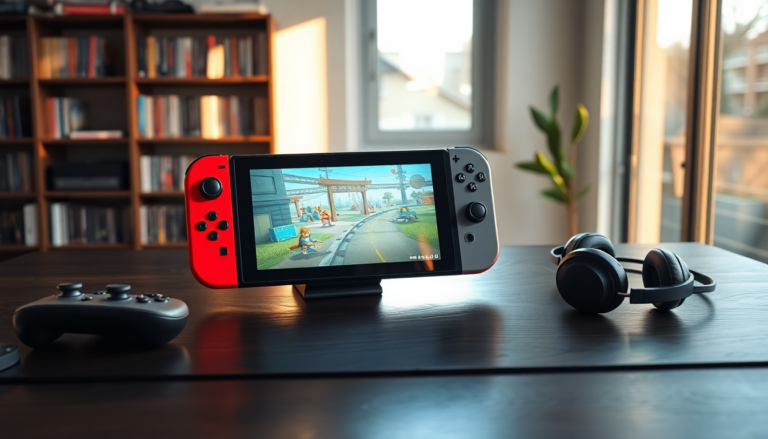Argomenti trattati
Excitement is buzzing around the Nintendo Switch 2, but as gamers dive into the latest installment of this beloved console, some are raising eyebrows at its display performance. With high expectations riding on this new device, let’s take a closer look at its screen capabilities and what they might mean for your gaming experience. Are the reported response times really up to par with what modern handheld devices should deliver?
Unpacking the Display Performance
Recent evaluations reveal that the Switch 2 is equipped with a 7.9-inch LCD display, boasting a 1080p resolution and a refresh rate of 120 Hz. However, the average response time is a concerning 17.06 ms, which puts it behind many of its competitors. This slower response time could impact the console’s ability to deliver that smooth 60 frames per second gaming experience that players crave. When we stack it up against other monitors, the Switch 2’s performance leaves much to be desired, especially when you consider how vital a quick response is for gaming.
In side-by-side tests, the Switch 2’s maximum response time peaked at 27.46 ms, but at its best, it managed a commendable 8.88 ms. These discrepancies point to a significant inconsistency in display performance. How well can this console keep up during fast-paced gaming sessions? A comparison with the Innocn M2U Mini-LED monitor, which achieved a response time of 11.06 ms, shows that the Switch 2 is lagging behind by a whopping 65%. That’s a tough pill to swallow for gamers who want that quick, responsive gameplay.
Looking Beyond Response Time
While response time is crucial, there are other display features that deserve our attention. Reports suggest that Nintendo may have placed a greater emphasis on characteristics like contrast ratios, brightness uniformity, and color accuracy. With a contrast ratio of 1309:1 and a peak brightness of 303 cd/m², the display shines when it comes to brightness, which is key for those vibrant visuals we all love. Additionally, the color gamut reportedly covers 100% of the sRGB color space and nearly all of the DCI-P3 and Adobe RGB spaces, ensuring that colors pop with vivid accuracy.
However, there’s a notable drawback: text readability. The unique RGB layout of the IPS panel might lead to blurriness, especially when it comes to rendering text. This is an issue often seen with OLED displays, and it could pose a challenge for gamers who rely on clear text for navigation and instructions. Is this compromise worth the trade-off for enhanced visuals?
Market Reception and What Lies Ahead
Despite the mixed reviews about its display performance, the Switch 2 has made a splash in the market, selling a staggering 3.5 million units just four days after its launch. This impressive feat highlights the loyalty of the Nintendo community, who seem willing to overlook certain hardware limitations in exchange for access to exclusive titles. After all, the Switch series remains the only platform officially supporting Nintendo’s extensive game library, a significant factor influencing buyers’ choices.
Looking forward, there’s hope that Nintendo will address the display shortcomings in future iterations, possibly by rolling out an OLED version that could elevate visual performance. With the gaming market continuously evolving, gamers will be keen to see how Nintendo responds to feedback regarding the Switch 2’s display capabilities and what that means for their overall gaming experience. Are you excited to see what the future holds?

